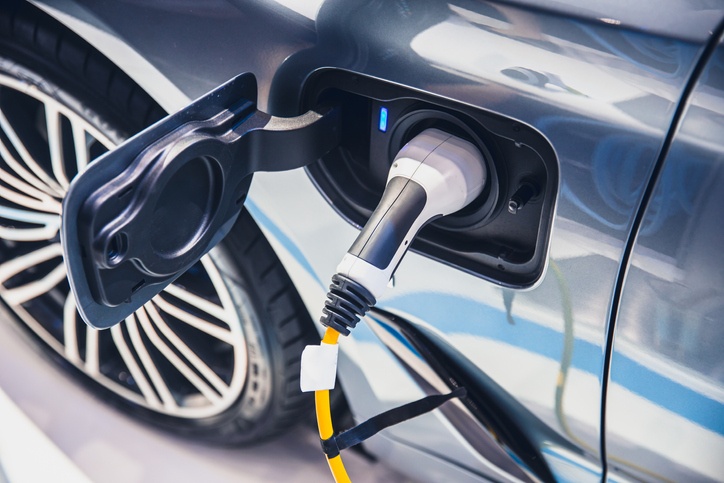Table of Contents
 Do you plan on purchasing a new vehicle within the next ten years? If the answer is yes, and good chance it is, you want to know how EV credits work.
Do you plan on purchasing a new vehicle within the next ten years? If the answer is yes, and good chance it is, you want to know how EV credits work.
Really, the correct term is “Qualified Plug-In Electric Drive Motor Vehicle Credits,” which is quite a mouthful. For purposes of this blog post, I’m going to call them EV credits.
Admittedly, I have not personally owned an EV or seriously shopped for one. However, electric motor and battery technology is improving rapidly, the charging network is growing, and the incentives are great, if you can make them work.
I’m going to discuss how EV credits work and how they can benefit, and possibly influence, your next vehicle purchase.
What is an EV Credit?
Put simply, the US government gives you money, in the form of a tax credit, for purchasing a qualified electric vehicle. The credit has been around for a while. Maybe you’ve already gotten one.
But, the rules changed in the summer of 2022 with the passing of the Inflation Reduction Act (IRA). And the changes make the credit less accessible to many taxpayers.
So let’s briefly discuss how EV credits worked before the IRA (pre 2023), and how EV credits work starting in 2023.
EV Credits 2022 and earlier:
If you purchased a qualified electric vehicle, you could claim a non-refundable credit of $2,917 for a vehicle with a battery capacity of at least 5 kilowatt hours, plus $417 for each kilowatt over 5 kilowatts, up to a maximum of $7,500. (Note that “non-refundable” means you can’t get a credit for more than the income taxes you otherwise owe.)
Criteria for EV to qualify:
- purchased brand new
- have an external charging source
- used in the United States primarily
- have a gross weight rating of less than 14,000 lbs
- not purchased to resell
- manufacturer can’t sell more than 200,000 EV’s in the U.S.
BTW, GM sold 200,000 EV’s by Q4 2018, with Tesla reaching 200,000 by Q1 2020 and Toyota reaching 200,000 by Q2 2022. These brands were ineligible for any more credits under the old rules.
EV Credits 2023 and later:
The maximum credit is still a non-refundable $7,500, but the EV credits work differently with the passing of the IRA. The IRA broadened the range of vehicles that qualify, but restricted the amount of taxpayers able to take them (more on this later).
First, lets break down the new rules for brand new EV’s.
Criteria for new EV to qualify:
- purchased brand new
- have an external charging source
- used in the United States primarily
- have a gross weight rating of less than 14,000 lbs
- not purchased to resell
- two components; $3,750 credit for critical mineral requirements (critical minerals extracted or processed in the US) and $3,750 for battery component requirements (battery produced or assembled in US)
- produced by qualified manufacturer
- final assembly in North America
Number of units sold is no longer a limitation, and, in an effort to stimulate US manufacturing, the final assembly of a qualified EV must be completed in North America.
The website fueleconomy.gov has a neat search engine to look up qualified EV’s. You just input year/make/model to check eligibility. You can also find a list of manufacturers and qualified models on the IRS website here. The selling dealer is also required to provide you with a written statement detailing, under penalties of perjury, the maximum allowable EV credit for the vehicle you are buying.
The IRA also opened up the EV credit to used vehicles, and is limited to $4,000.
Criteria for a used EV to qualify:
- must be the first sale other than to the original owner
- vehicle must be at least two years old
- had to be a qualified EV when sold new
- must be sold by a dealer
- have a gross weight rating of less than 14,000 lbs
- purchased in the United States
- credit is limited to 30% of purchase price
- purchase price must be less than $25,000
- can be claimed once every three years
Limitations
Earlier I mentioned EV credits will be more restrictive for a lot of taxpayers. Gone are the days of trading in your top of the line, six figure Tesla Model S every year for the newest latest and greatest, and subsidizing the initial cash outlay with a nice big $7,500 credit at tax time.
There are now MSRP restrictions and adjusted gross income (AGI) restrictions we need to cover. Let’s begin with the MSRP restrictions.
MSRP Limits:
You cannot claim an EV credit if MSRP exceeds the following amounts:
- Vans – $80,000
- Sport Utility Vehicles – $80,000
- Pickup Trucks – $80,000
- Other – $55,000
These prices might seem high, but it is easy to cross the threshold when you start adding options to the base price.
For fun, I went to Ford’s website to build a new Lightning truck. The base price of the Lariat model starts at $69,995. Add in the extended range battery option and a tonneau cover, and the MSRP jumps to $81,040, making this EV ineligible for any credits. I guess you’d want to wait on the tonneau cover and buy one with your $7,500 tax credit the following year.
Please note, MSRP does not include tax, title, license, or dealer mark-up fees. So good news there.
Now let’s cover the new AGI limitations:
AGI Limits:
You cannot claim an EV credit if your AGI exceeds the following amounts:
- Married Filing Jointly – $300,000
- Head of Household – $225,000
- All other taxpayers – $150,000
These are respectable income levels, yes. But I don’t think it is a stretch to assume most (or at least many) people purchasing brand new EV’s likely have an AGI above the threshold. And there is no phase out, you either qualify or you don’t.
Final Thoughts:
Hopefully no one purchases a new EV and gets surprised they don’t qualify for EV Credits when they file their tax return the following year. This is especially true for the early EV adopters that have already taken EV credits and are not aware the rules have changed, substantially, for 2023.
If the EV credit is a major deciding factor in your car purchasing process, you want to to know how EV credits work. If you follow the rules and don’t make too much money, you should get a nice big tax credit.
Make sure to read our post “Inflation Reduction Act: Tax Credits for Homeowners” for information on additional clean energy property credits.



.png#keepProtocol)




.png#keepProtocol)
More Stories
‘The Forest Must Stay!’ Treetop Protest Erupts At Tesla’s Berlin Gigafactory As Activists Try To Thwart Expansion – Tesla (NASDAQ:TSLA)
GamerSafer acquires Minecraft-focused Minehut server community
New York Appeals Court allows Trump, sons to continue running business, denies request to delay payment